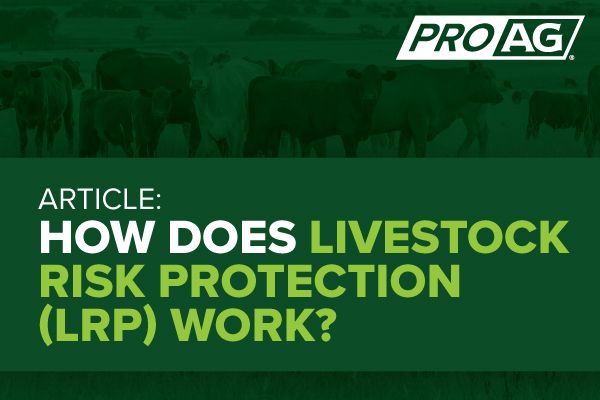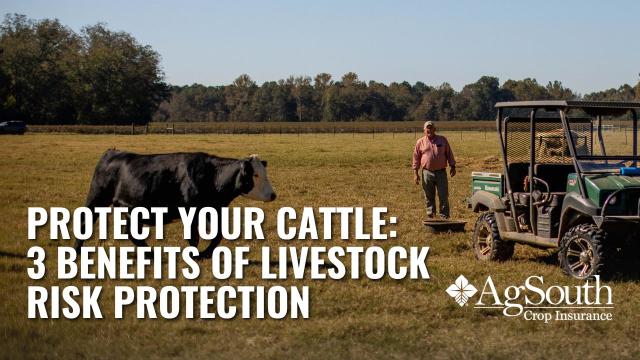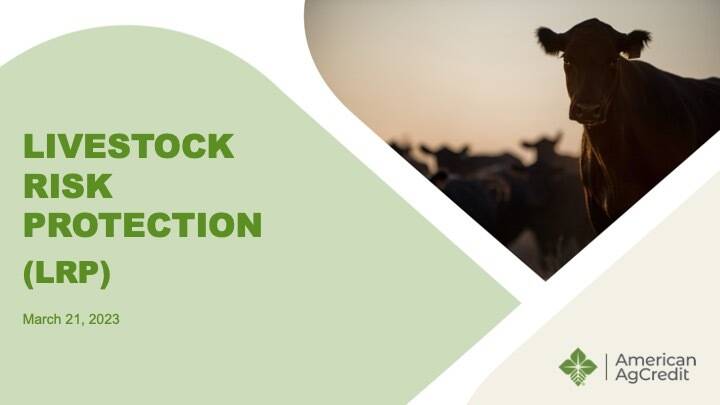Understanding Livestock Risk Protection (LRP) Insurance Policy: A Comprehensive Overview
Browsing the world of animals danger security (LRP) insurance can be a complicated endeavor for lots of in the agricultural field. This kind of insurance uses a safeguard against market variations and unpredicted scenarios that could impact animals manufacturers. By understanding the ins and outs of LRP insurance, producers can make enlightened decisions that may safeguard their operations from monetary threats. From how LRP insurance policy operates to the various protection alternatives available, there is much to discover in this thorough guide that could potentially shape the means livestock manufacturers approach threat management in their services.

How LRP Insurance Policy Functions
Occasionally, recognizing the technicians of Animals Risk Defense (LRP) insurance policy can be complex, however damaging down exactly how it functions can offer clarity for ranchers and farmers. LRP insurance is a risk administration tool developed to shield livestock manufacturers versus unanticipated rate declines. It's important to keep in mind that LRP insurance coverage is not a profits guarantee; instead, it focuses only on price danger protection.
Qualification and Coverage Options

When it comes to insurance coverage choices, LRP insurance supplies producers the adaptability to choose the insurance coverage level, insurance coverage duration, and endorsements that ideal match their risk management demands. By recognizing the qualification requirements and protection alternatives available, animals manufacturers can make enlightened choices to take care of threat successfully.
Pros and Disadvantages of LRP Insurance
When reviewing Animals Threat Defense (LRP) insurance coverage, it is necessary for livestock manufacturers to weigh the benefits and downsides intrinsic in this risk management device.

One of the main advantages of LRP insurance is its ability to supply security versus a decrease in animals rates. Furthermore, LRP insurance policy offers a level of versatility, allowing manufacturers to personalize protection levels and policy periods to suit their particular needs.
Nevertheless, there are additionally some downsides to think about. One limitation of LRP insurance policy is that it does not secure against all kinds of risks, such as condition outbreaks or natural disasters. Moreover, premiums can occasionally be pricey, especially for manufacturers with large animals herds. It is vital for manufacturers to carefully examine their specific risk direct exposure and economic situation to determine if LRP insurance policy is the best danger management tool for their procedure.
Comprehending LRP Insurance Premiums

Tips for Taking Full Advantage Of LRP Conveniences
Maximizing the benefits of Livestock Danger Defense (LRP) insurance coverage requires calculated preparation and aggressive risk administration - Bagley Risk Management. To maximize your LRP insurance coverage, consider the following suggestions:
Regularly Assess Market Conditions: Remain notified regarding market patterns and cost variations in the animals sector. By keeping track of these variables, you can make enlightened choices concerning when to purchase LRP coverage to protect against potential losses.
Set Realistic Protection Levels: When choosing protection levels, consider your production costs, market price of animals, and prospective dangers - Bagley Risk Management. Setting reasonable protection levels ensures that you are appropriately shielded without paying too much for unneeded insurance policy
Expand Your Coverage: Rather of counting exclusively on LRP insurance coverage, think about diversifying your threat monitoring methods. Integrating LRP with other threat monitoring tools such as futures contracts or alternatives can give thorough protection against market unpredictabilities.
Review and Readjust Protection On a regular basis: As market conditions transform, occasionally examine your LRP coverage to guarantee it aligns with your existing danger direct exposure. Changing coverage levels and timing of acquisitions can assist maximize your danger protection method. By complying with these tips, you can take full advantage of the benefits of LRP insurance coverage and protect your livestock operation versus unanticipated risks.
Verdict
Finally, animals risk defense (LRP) insurance coverage is an important tool for farmers to manage the economic threats related to their livestock operations. By comprehending just how LRP works, eligibility and coverage options, along with the advantages and disadvantages of this insurance policy, farmers can make enlightened decisions to shield their source of incomes. see this page By carefully considering LRP costs and executing techniques to make the most of advantages, farmers can mitigate possible losses and ensure the sustainability of their operations.
Livestock producers interested in acquiring Animals Danger Protection (LRP) insurance coverage can check out a variety of qualification standards and insurance coverage alternatives customized to their details animals operations.When it comes to coverage alternatives, LRP insurance coverage supplies manufacturers the adaptability to choose the protection level, protection period, and endorsements that best suit their risk management demands.To realize the details of Animals Threat Defense (LRP) insurance policy completely, comprehending the elements influencing LRP insurance costs special info is critical. LRP insurance policy costs are identified by various elements, consisting of the protection level chosen, the anticipated cost of livestock at the end of the insurance coverage duration, the type of animals being guaranteed, and the length of the insurance coverage period.Review and Readjust Protection On a regular basis: As market conditions transform, occasionally examine your LRP coverage to guarantee it lines up with your current threat exposure.